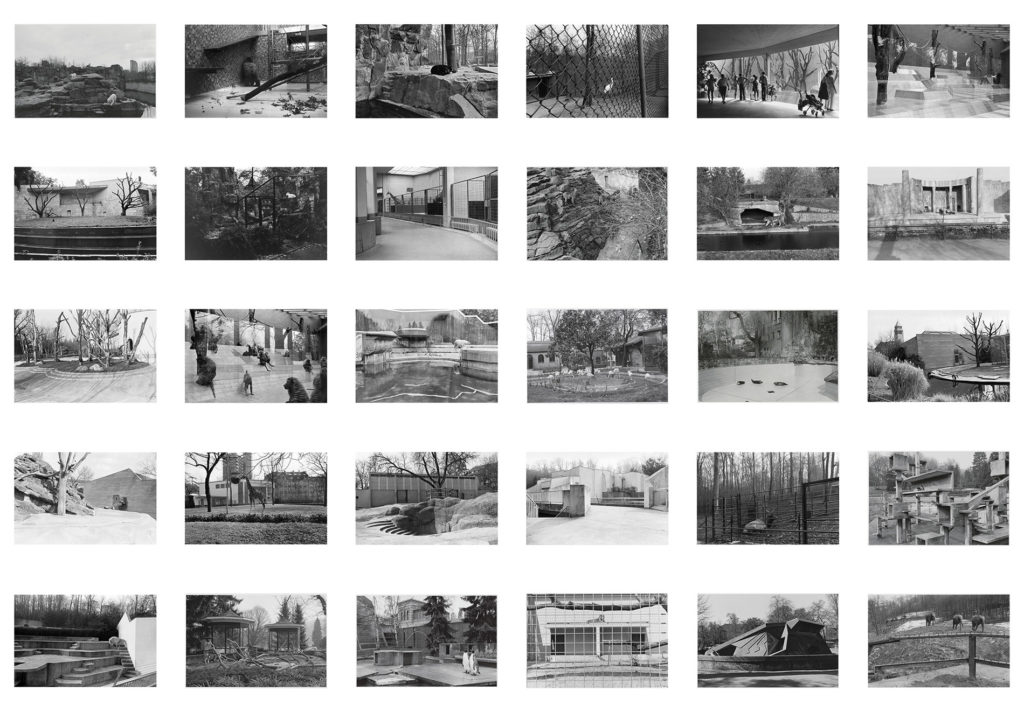
Gastland Bundesrepublik Deutschland, 1983-84 | © Hildegard Ochse
In his essay »Why Look at Animals?« John Berger drew parallels between the function of the zoo and art exhibitions in museums: »Visitors visit the zoo to look at animals. They proceed from cage to cage, not unlike visitors in an art gallery who stop in front of one painting, and then move on to the next or the one after next.« Cf. John Berger: 1981.
In her extensive series »Gastland Bundesrepublik Deutschland« (1983-1984), Hildegard Ochse shows over one hundred different pictures of creatures in the cages, enclosures, and showcases of European zoo architecture. In Ochse’s photographs, these zoos almost seem more like playgrounds for architects interested in larger design freedom than designing buildings for homo sapiens. In Neo-classical, Oriental, or Bauhaus-style buildings with stables and enclosures, the creatures are presented in individual boxes with their obligatory label like art exhibits in museums. Hildegard Ochse’s photographs do not belittle, minimize, or humanize. Her work is both a political as well as philosophical statement and has nothing to do with decorative animal photos for tourists. Ochse deliberately left the viewers of the animals out of her pictures. Meticulously photographing the animals like soulless exhibits she made it clear that thick panes of bulletproof glass, gates, fences, heavy barriers, and deep-water trenches are more like high security prisons than adequate life spaces. The focus on architecture in her photos tells us more about the builders’ intentions than the animals from foreign countries themselves. Even today these modern zoos seem to be more like trust companies for their visitors’ creation and consumption than anything else.

Gastland Bundesrepublik Deutschland, 1983 | © Hildegard Ochse
»All photographs are there to remind us of what we forget. In this -as in other ways- they are the opposite of paintings. Paintings record what the painter remembers. Because each one of us forgets different things, a photo more than a painting may change its meaning according to who is looking at it.« Cf. John Berger, Keeping a Rendezvous, 1991.